Where Winds Meet Review: A Comprehensive Look
Where Winds Meet Review carries more weight than the title suggests, because the game it describes attempts to merge spectacle, tradition, and technical density into a single frame. The result is a world of sweeping landscapes and airborne martial artistry that often contradicts the machinery beneath it. The tension between what the game wants to be and what it asks players to manage shapes the experience long before the story reaches its abrupt ending.
In the second paragraph, the source of this assessment must be clear: it takes its bearings from Jarrett Green’s review on IGN, which provides the most direct measure of what works, what falters, and why the game’s structure frequently strains under its ambition. His text maps out contrasts between energy and weight, fluidity and obstruction, and those contrasts echo through every layer of the experience.
“Moments that would be moving can be undermined as voices suddenly cut out.” — Jarrett Green
The game begins with confidence. Its interpretation of 10th-century China rolls out as a broad stage where embattled clans maneuver for control through warfare, alliances, and political sleight of hand. The player’s role appears simple at first: a wanderer from a wine maker’s household steps into a world unsettled by turmoil, guided by curiosity and hunger for purpose. That opening creates a sense of momentum, carried by lush sights and an immediate invitation to roam. Yet as the narrative widens, the seams show. Dialogue exchanges stumble under loose phrasing, awkward repetition, and abrupt tonal shifts. Long stretches of story advance through scenes that feel incomplete, not because of what they reveal but because of the interruptions that shadow them.
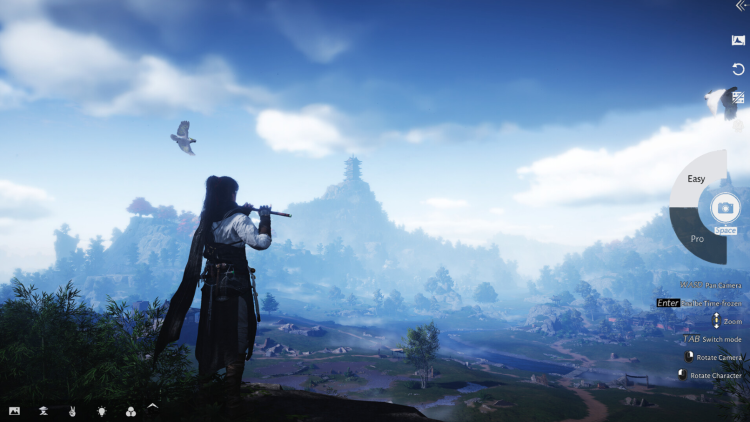
Technical issues turn these interruptions into a recurring pattern. Audio drops out without warning, leaving characters mouthing lines the player cannot hear. Subtitles misalign with the words that do break through. One late-stage confrontation, where two rivals join forces in a decisive stand, loses its urgency when their voices simply vanish mid-exchange. A disguise sequence intended to evoke a theatrical shift fails visually when the character model never changes. The premise asks the player to trust the fiction, yet the presentation continues to loosen that trust as the hours progress. Even the length of the campaign—two chapters stretched into thirty or more hours—cannot fully anchor the journey because the ending leaves the protagonist’s trajectory suspended rather than shaped.
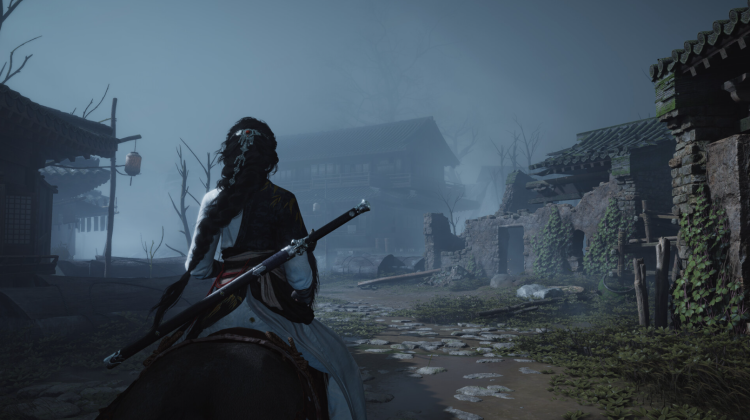
Side stories offer more freedom. Many of these tales settle into sharper lines and more memorable beats. A story about helping ghosts resolve the trauma of their community’s collapse introduces a degree of emotional detail missing from the central narrative. Another, involving a group of martial arts trainees conducting a ritual that teeters between discipline and slapstick, shows how humor and spontaneity breathe life into the setting. These moments emerge without the pressure of serving a larger structure, and in their looseness they find room for surprise. Yet they remain subject to the same uneven technical footing as the main path. That instability limits how long their strengths hold.

Combat stands apart as something built with careful layers. The game trades on the promise of Wuxia movement—wall-running, air-stepping, frenetic exchanges—but tempers it with slower tactical demands. Each of the seven weapon types establishes a distinct role, with branching styles that alter their moves and interactions. Combinations matter. A spear and glaive pairing, built for tanking, gains rhythm through timed transitions, defense buffs, and ability chains that trigger enhanced effects. Switching between unrelated classes disrupts that rhythm, which drives most players toward specialized pairings rather than experimentation.
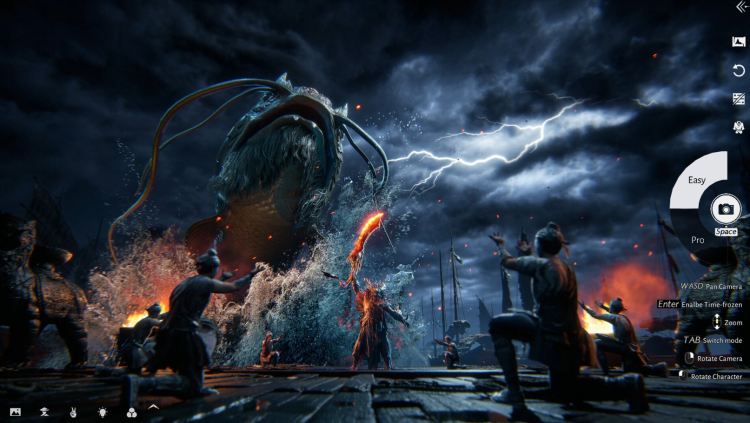
The difficulty of expanding the arsenal reinforces that impulse. New weapons appear infrequently, and when they do, they often lack accompanying style scrolls required to wield them. A player might pick up an umbrella or rope dart early in the campaign only to spend hours without any means of using it. Even when a style surfaces, the weapon will likely trail far behind the current level curve, demanding resource investment simply to make it viable. That barrier reshapes discovery into obligation, making the act of testing something new feel more like administrative labor than a chance to explore.
“Ability chaining and buff management make combat feel much more like an MMO than an action game.” — Jarrett Green
The MMO comparison becomes clear in extended encounters. Regular enemies fall into recognizably layered roles. Some heal, some buff, some pressure from range, and the player must prioritize accordingly. Attacking without attention to defense quickly drains stamina. Parrying becomes the central mechanism for opening an opponent’s guard, and mastering its timing alters the pace of larger skirmishes. The optional auto-parry system offers a safety net, consuming a regenerating insight resource to cancel what would otherwise be punishing hits. That system softens difficulty spikes without removing the tension entirely, and for many players it may be the most practical way to manage the game’s escalation.
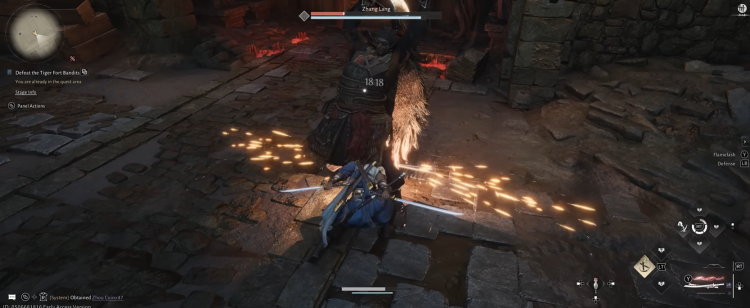
Boss battles sit unevenly within that escalation. Many of them feel like stronger variants of enemies already encountered, with deeper health pools and more forceful attacks. Others break from this template through unusual staging or theatrical flourishes, though even those set pieces vary in strength. A dragon-dance fight staged across beams and fireworks delivers spectacle, while a later boss that nods toward a famous encounter from Sekiro lands with less precision. The rhythm of these encounters shifts between inspiration and routine, leaving no consistent pattern.

Exploration helps relieve the heaviness of combat. The world’s surface contains an assortment of unexpected interactions, including the now-noted tai chi-practicing bear that exemplifies the game’s stranger instincts. That moment serves a purpose beyond charm. By observing the bear through a timing-based minigame, players unlock a mystic art that allows them to manipulate wind, strike at distance, or disarm shielded opponents. The strongest examples of exploration in the game work exactly this way: a curious sight leads to a meaningful tool that loops back into combat or traversal. These discoveries give the world a direct, tactile connection to the systems beneath it.
“I was regularly surprised by the things I stumbled across, like a bear doing tai chi.” — Jarrett Green
Those high points contrast with the volume of filler that surrounds them. The world contains jobs rooted in clever ideas, such as a medical minigame that frames treatment as a turn-driven exchange. But these concepts flatten quickly, offering little evolution as the player advances. The more common activities—fishing, crafting, duels, searches—follow well-trodden paths with few variations. Despite the constant influx of rewards, most of what enters the inventory plays a minimal role in shaping the experience. Consumables trigger automatically. Crafting items pile up. The player’s main relationship to gear involves watching an overall power number rise rather than weighing distinct advantages.
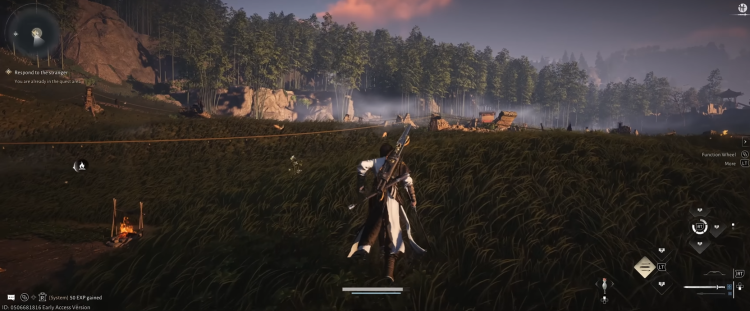
Equipment management compounds this feeling. Each item presents incremental bonuses, set synergies, and upgrade paths that extend deep into menus crowded with text. Slot-level upgrades add another layer of micro-progression, followed by additional gear sets designed to stack small statistical boosts. Very few of these adjustments express themselves meaningfully in moment-to-moment play. The presence of a single button that automatically allocates resources across every available upgrade frame quietly acknowledges how overextended these systems have become. It is easier to let the game decide than to engage with the labyrinth it has built.
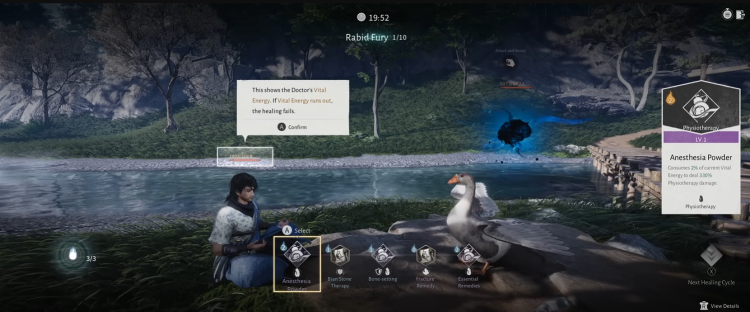
Progression gates tighten further through Breakthrough Tests, which stop leveling until the player defeats timed waves of enemies. Each victory raises not only the character’s level cap but also the strength of every enemy in the world. While the early tests pass quickly, later ones require repeated attempts as damage thresholds grow harsher. The main story eventually becomes tied to these tests, forcing players to grind experience simply to unlock access. Real-time waits introduced by daily server resets add another layer of friction, leaving the impression that the game enforces pace artificially.
“Jumping through hoops to progress only to be told I'm moving too fast is ridiculous.” — Jarrett Green
Traversal fluctuates between fluidity and breakdown. The ability to scale walls, triple-jump across gaps, and glide over ridges brings energy to long journeys. Yet these mechanics occasionally deactivate without warning, requiring a full restart of the client to restore them. When this happens, certain chests and environmental puzzles become unreachable until the session resets. The issue does not stem from complexity so much as instability, and it intrudes at irregular intervals.
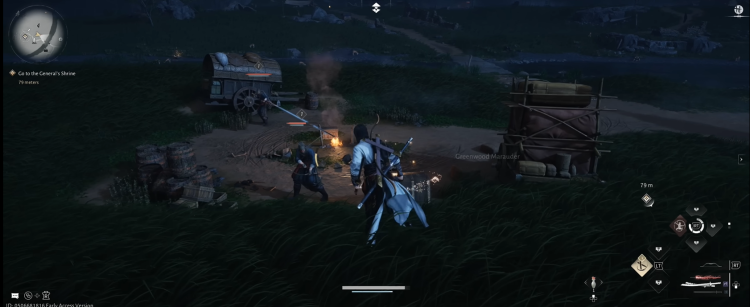
Interface performance adds still more drag. Menus load sluggishly and respond less reliably as the session continues. Navigation through sub-menus to find item descriptions or locate materials often leads to blank pages or broken links. These interruptions erode the sense of discovery that the world works to provide. The game’s breadth becomes a burden when every attempt to manage progression or equipment requires wading through layered delays.
Co-op exists, though few players encountered stable matchmaking before launch. AI companions fill gaps during large events, executing required steps with mechanical efficiency but without the coordination that human groups provide. Their durability allows encounters to progress, but it also strips away tension from multi-phase boss battles. The rewards remain obtainable, but the broader design clearly anticipates a population that was not present during early access.
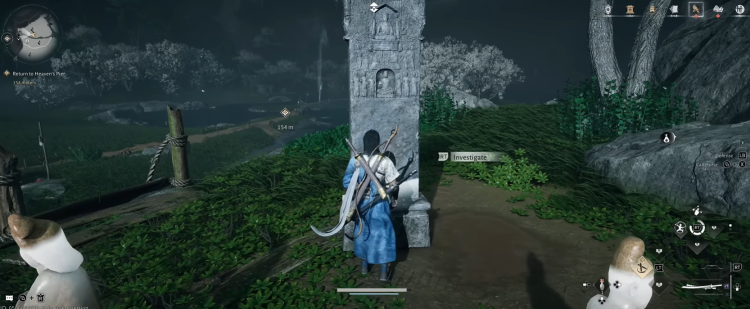
Where Winds Meet occupies a space defined by ambition and imbalance. It draws from Wuxia tradition with sincerity, building a world of movement, mysticism, and political unraveling. It introduces clever ideas—mystic arts, tactical rotations, emergent encounters—that show how much thought went into its foundation. But every strong idea stands beside a system that sprawls too far, demands too much administrative attention, or fails to function reliably.
Green’s review isolates these contradictions without overstating them. His account reflects a game that reaches in many directions at once, generating moments of grace while dragging a weight of structural excess behind it. The contrast between its imaginative curiosity and the operational grind required to sustain it defines the final impression.
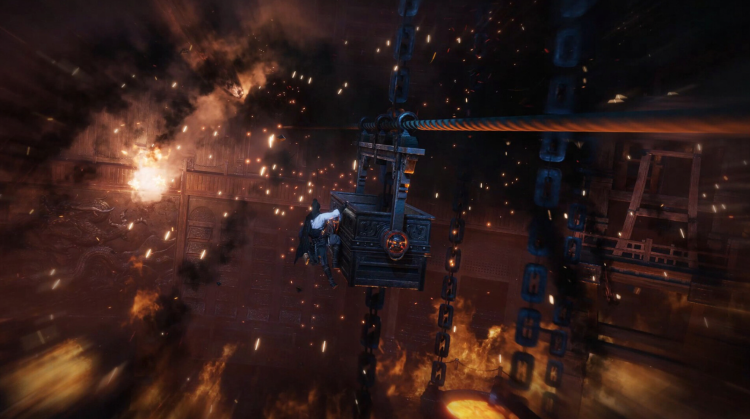
The world invites wandering but imposes gates that slow momentum. The combat rewards precision but limits experimentation. The story carries the notes of Wuxia drama but loses clarity as technical issues interrupt its flow. All of this creates an experience that feels both expansive and constrained.
Yet the attempt remains earnest. Where Winds Meet aims for something layered: a fusion of open-world exploration, tactical action, ritual curiosity, and world-building steeped in mythic tradition. The outcome does not unify these ambitions, but it does expose a studio reaching beyond established limits, willing to fold disparate mechanics together even when the framework strains.
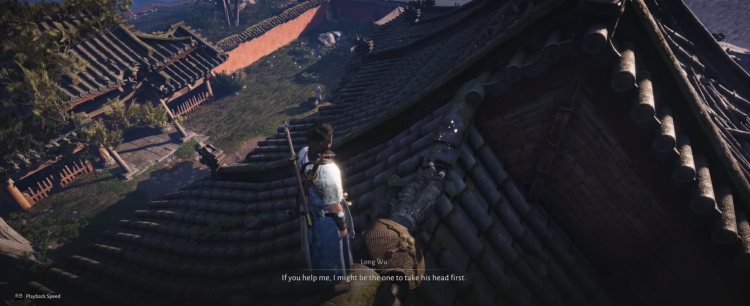
The game reveals its strongest qualities when it steps back, lets the world breathe, and allows players to follow unexpected paths. It strains when it insists on systems that overshadow that freedom. Between those poles lies a world with undeniable personality, shaped by craft, undone by volume, and carried by moments that linger even as the structure around them cracks.
Check Where Winds Meet on Steam.
5 Free Cases, Daily FREE & Welcome Bonuses up to 35%


EGAMERSW - get 11% Deposit Bonus + Bonus Wheel free spin
EXTRA 10% DEPOSIT BONUS + free 2 spins

Sign up now and get 2 FREE CASES + 5$ Bonus
3 Free Cases + 100% up to 100 Coins on First Deposit


Comments